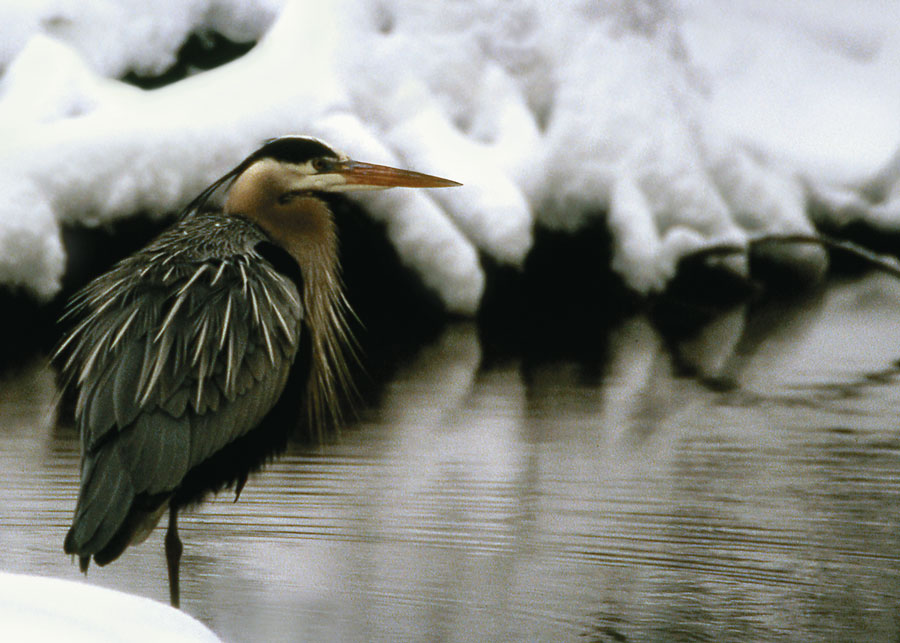
Let's face it. Winter in New Jersey brings on Seasonal Affective Disorder. For too many mornings a metal gray sky bumps against the roofs of the cars crowding the highways. Daylight begins late and when it ends, it doesn't just end early. It ends emphatically. Gray morphs into black with stunning speed. It is enough to make most people long for the light of the tropics, the Day-Glo Sear Your Retinas beauty of a Caribbean beach.
And yet, with a shift in perspective, photographers can fall in love with our short, cold days of winter. No storm lasts forever. A location that seemed dull and flat one day might be bathed in enchantment the next. Light refracts off icicles and droplets; mist quilts snow-covered valleys. Instead of retreating to a studio world of Photoshop filters, aspiring photographers should view New Jersey's winters as a litmus test. If a good portfolio develops out of February storms, capturing outdoor images the rest of the year might feel like plucking low hanging fruit.
The key to winter photography? Decent packing and a bit of homework. Yes, everyone talks of The Shot, the time they captured their nephew's championship basketball dunk with the skill of a seasoned pro as if good photography only requires faith in the adage "F8 and be there." A good rule but having said that: take your time. Prepare.
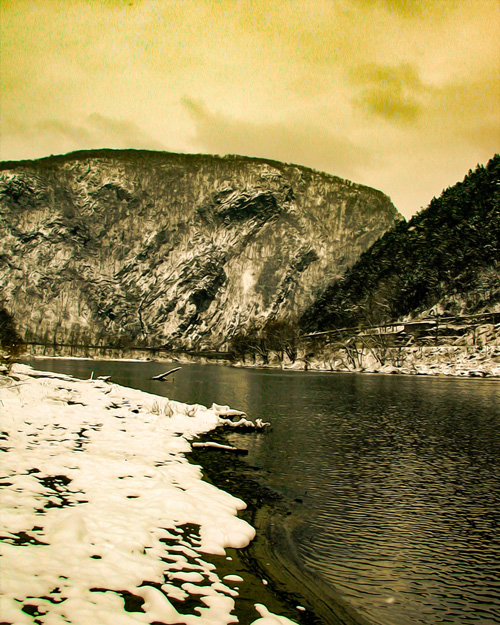
These days, a cellphone camera will do quite nicely. But if you want something special, and you've somehow still have access to a quality digital SLR, pack a telephoto, a macro, and a shorter lens such as a 35-70mm. Don't go wild with gear. Go for high resolution digital files and consider a slow ISO setting(100), especially on days when light hits the snow. It might be time to work in black and white: experienced photographers know how snow throws old barns and tree-filled landscapes into sharp contrast, creating lovely monochromatic images. Experiment with filters; polarizers that work so well in the summer give a blue cast to snow. UV and neutral density filters, however, can help cut back on glare and/or balance contrasting elements. Monopods can be wonderful alternatives to a tripod. Lighter and more maneuverable, a good monopod serve as a camera support and a hiking pole. Dress for the weather: mittens, with flip off tops, free up fingers for those tiny buttons and dials. Waterproof boots will come in handy for that vantage point halfway across a field. Complete the outfit with subdued outer layers, unless you plan to scare wildlife into the next county. Head out in an old parka, old coveralls, a few layers of polar fleece but head out warm.
Study the weather. Storms offer drama. In their wake fields and farms seem as clean swept and pure as an ice rink at the Olympics. Early risers might catch the surprise of mist rising from rivers and streams. Clear afternoons might offer orange light on snow.
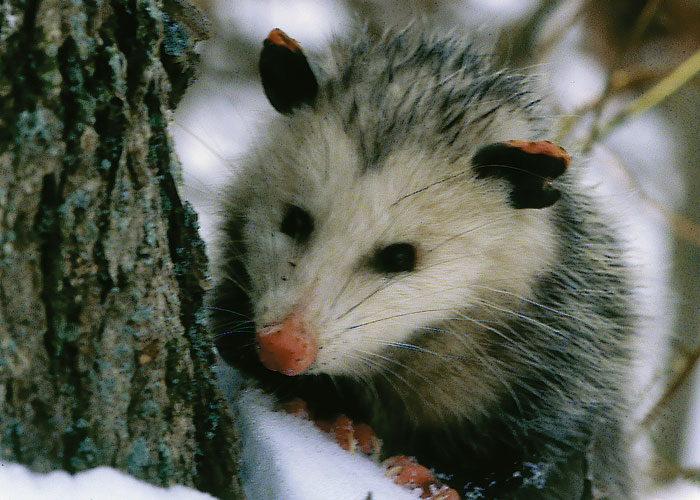
Learn real estate. Become familiar with the old farms of Amwell Valley, the waterfalls of Sussex County, the stone walls and pastured sheep along back roads. Sites change; frost patterns shift. Icicles accumulate. New sets of tracks pattern the fields.
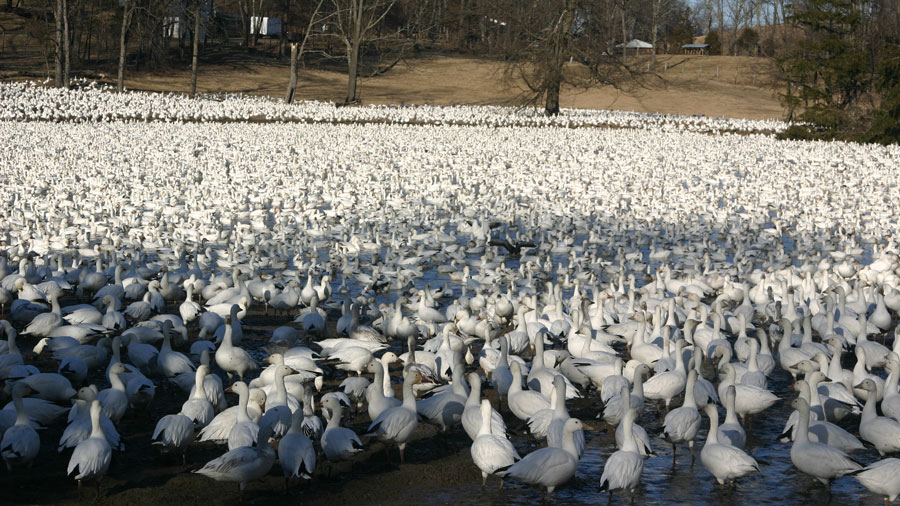
Appreciate
wildlife. Snow geese visit Merrill Creek by the thousands. Notice the
odd, out of place details, and don't forget it's a small, small world.
(A frog, frozen in ice, provided an image that was both unsettling and
strangely moving.)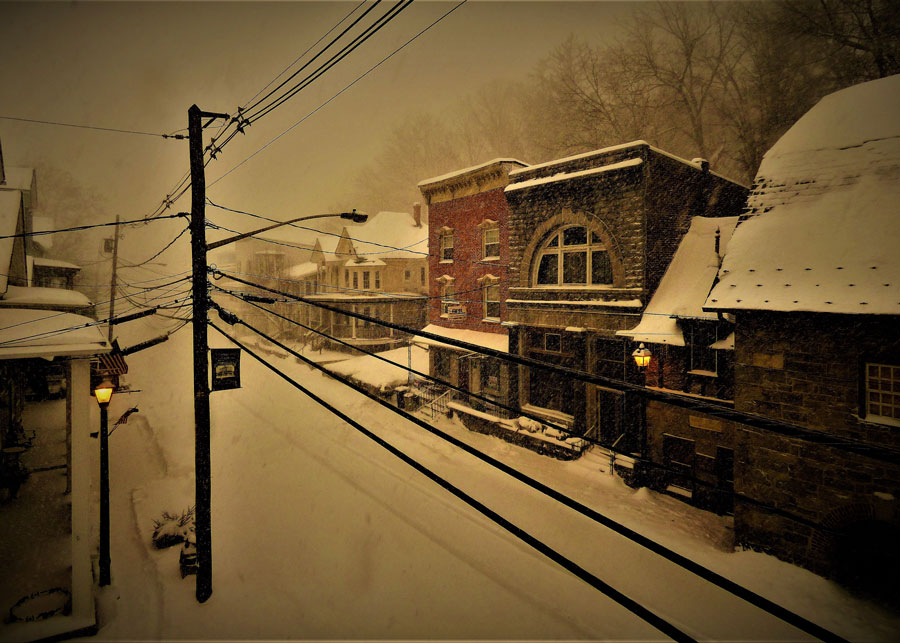
All too soon, winter will end; the storms will pass. Successful photography, like most efforts that prove worthwhile, is a mix of perspiration, inspiration, and perhaps a bit of serendipity. For a photographic team who found a black bear hibernating in a field in Warren County, everything came together for a fascinating shot. Remember: true photography nuts keep cameras at their sides. Always.